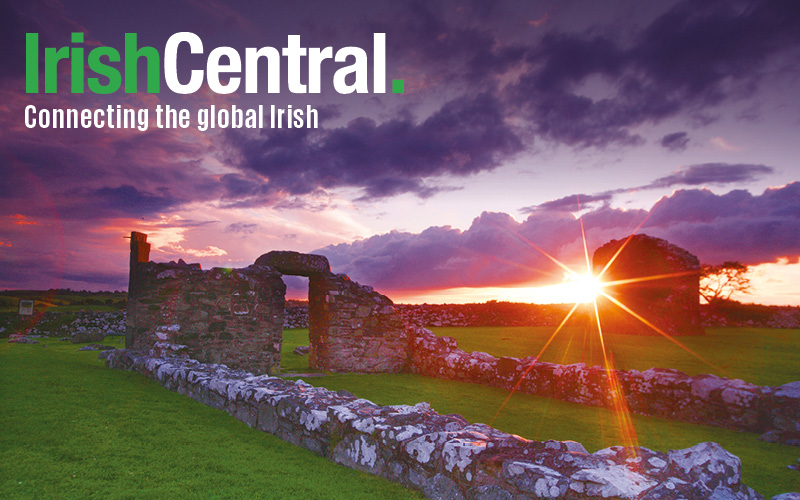Beer makes him young
A 75-year old man with a serious drink problem and who appears regularly at Naas District Court told Judge Desmond Zaidan that beer was what kept him looking so young.
Although he also claimed he had intended going off it the day before he appeared at his court appearance on September 7.
James Pender, whose is listed as having no fixed abode, was charged with threatening, abusive or insulting behavior and intoxication in a public place on September 6 last at Market Square, Kildare town.
Zaidan noted that the defendant looked “slightly better than he did the last time I saw him.”
He was told that Pender had been in prison in Portlaoise and had been on temporary release. From there he had gone to the Sister Consilio rehab in Athy.
“I done me best. I was there seven days and I wasn’t allowed out. But when I got out, I went to see the probation,” he said. “I was going to quit yesterday morning.”
“He’s like an old warhorse. The waft of alcohol crosses his nostrils and off he goes to battle,” his solicitor Conal Boyce told the court.
Noting that Pender looked much younger than his 75 years, Zaidan asked him, “What’s the secret to a long life James?”
“I don’t know,” the defendant, who trembled as he stood before the court, said. “Maybe it’s the beer!”
Gardai (police) told the court that there were a number of calls about the defendant urinating on the street between 4-5 p.m. on the day in question. He was extremely intoxicated at the time of his arrest.
“Sure I didn’t know what I was doing. You don’t be there. You do be off on the moon,” he told the judge.
Some discussion took place as to what to do with Pender. While the judge wished to do something to help him, Pender had committed a crime while on temporary release and therefore was required to return to prison to serve the remainder of his original sentence.
“I haven’t got the strength for prison,” he told the court. “I just don’t have it.”
“I do believe he’s not responsible for his own behavior,” Boyce noted, although it was a view not shared by Inspector Patsy Glennon.
The defendant was returned to Portlaoise prison.
Leinster Leader
Thugs destroy house
A gang of young thugs destroyed a 87-year-old Limerick city woman’s family home on the southside after she moved into a nursing home.
The pensioner, who wishes to remain anonymous for fear of repercussions, was planning to hand the home in Quinn’s Cottages, Prospect, where she was born and raised, down to family.
But now the property is wrecked following the arson attack.
Councilor Joe Leddin, who sits on the housing committee, has said elderly residents in Quinn’s Cottages, which is about to celebrate its centenary, are “living in fear” of these gangs of youths. He described them as “mindless young thugs.”
There are 48 houses in Quinn’s Cottages, which was built by Limerick City Council almost 100 years ago.
Until recently it was a quiet area. But gangs have begun to prey on the most vulnerable in society, including hurling water bombs and eggs at windows -- and even smashing them in -- it has been claimed.
“We have elderly people living here all their lives. There is a lady of 90 years of age, who has had her windows battered every night of the week. It is disgraceful,” Leddin said.
“We are talking about mindless young thugs answerable to no one simply marauding around this city, hell bent on causing destruction, pain and misery.”
He wants to see the Gardai given more power to stamp out this “serious criminality and anti-social behavior.”
Limerick Leader
Bad medicine
A consultant gynecologist at Our Lady of Lourdes Hospital in Drogheda is facing 38 allegations of professional misconduct following the death of a woman from a cancerous tumour.
Sharon McEneaney, from Carrickmacross, Co. Monaghan, died after waiting nine months to have cancer diagnosed, a medical inquiry has heard.
The young creche worker visited the Drogheda hospital in October 2007, complaining of severe pains on the left side of her abdomen.
However, nine months later the 29-year-old had still not received a diagnosis. She died from a malignant tumor in 2009.
The Medical Council has been hearing details during a fitness to practice inquiry into Dr. Etop Akpan. The Nigerian doctor has been charged with 38 counts of professional misconduct following McEneaney's.
Evidence was heard that the woman was “left in the dark” over her condition and only received a biopsy after her family sought help from local TD (member of Parliament) Dr. Rory O'Hanlon.
Despite pressure being put on the hospital by O’Hanlon and the woman's general practitioner, it was not until July 2008 that she received treatment.
The inquiry also heard that a registrar who worked with Akpan said he never told her to order a biopsy.
Dr. Rukhsana Majeed denied she had been instructed to follow up on the case of McEneaney.
It also emerged that McEneaney's chart waited in an in tray for three months.
Nora Landers, secretary to the McEneaney’s GP, said she was “horrified” when the consultant's secretary at Our Lady of Lourdes told her the file waited for his attention for three months.
The hearing continues.
Drogheda Independent
Ancient skeletons
Two skeletons discovered in Knockvicar, with large stones wedged into their mouths, were buried in this way around 1,300 years ago to stop them rising from their graves to haunt the living. This is the fascinating story which is recounted in a new documentary featuring the work of archaeologists at IT Sligo.
Such “deviant burials” are associated with vampires and also with revenants or zombies who were believed to come back among the living, unless steps were taken to contain them in their graves.
This remarkable discovery was featured in the Revealed series in a British Channel 5 documentary, which will also be broadcast on the National Geographic channel early next year.
The skeletons, both male, were found side by side on land owned by John and Tina Burke from Kilteasheen, Knockvicar.
“This discovery suggests that the phenomena of vampires which comes from a much later medieval period could be based on a pre-existing idea of a zombie. The concept of a revenant or zombie was widespread in the eighth century. A stone was wedged into the mouth of the dead body as the mouth was seen as a passageway and the idea of taking one’s last breath led to the belief that the soul could escape through the mouth. It was believed that by burying a body in this way you could stop the revenant or zombie coming back to life,” said Chris Read, lecturer of applied archaeology at IT Sligo.
He said that this was the only such discovery of this kind in Ireland. Read, along with his colleague Dr. Thomas Finan from St. Louis University in the U.S., excavated 137 skeletons from a site at Kilteasheen during a series of digs from 2005 to 2009, in a project funded by the Royal Irish Academy. The archaeologists believe that there were close to 3,000 skeletons on the site spanning the centuries from 700 to 1400.
The two skeletons with stones in their mouths were not buried at the same time but both were males -- one elderly and the other a young adult.
The skeletons are currently being held in a special storage area in IT Sligo, and Read and his team will be continuing their analysis this year. It is hoped to return the skeletons to their final resting place in Knockvicar when all tests have been completed, but ultimately this decision will rest with the National Museum.
Roscommon Herald
No bilingual signs
The Northern Ireland Tourist Board (NITB) has refused to fund signs in Newry and Mourne if they contain Irish.
The revelation came to light when councilors asked that tourist signs slated for the area be bilingual, in line with council policy.
However NITB has said they will only fund signs that are in English. Sinn Fein councillor Brendan Curran said that if the signs are not bilingual they would rather not have them.
“The Tourist Board are refusing to fund any signs that are bilingual, plain and simple. This is an issue of equality," he said.
“It is council policy that all signs are to be bilingual, and Newry and Mourne are leading the way in ensuring that our culture, heritage and language is protected. The modern names of almost every village, town, mountain or place of interest in Ireland are merely Anglicizations of their Gaelic names
An NITB spokesperson said its policy on signs is for the good of visitors.
“NITB is entirely focused on the experience of the visitor to Northern Ireland, and our policy is, likewise, to ensure that all tourist interpretation and signage is clear, does not confuse our visitors and assists them in understanding the importance of the destination," she said.
Newry Democrat




Comments